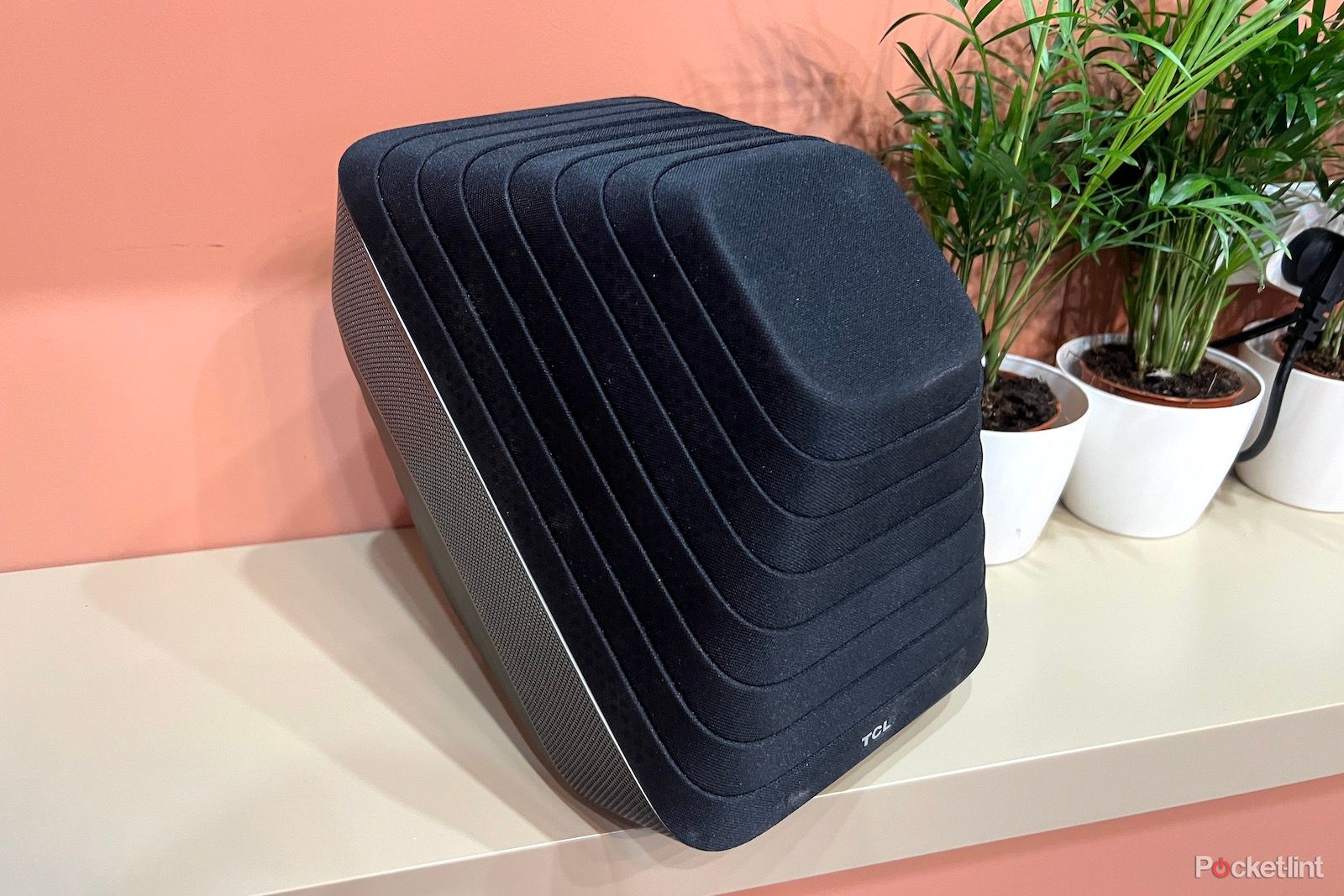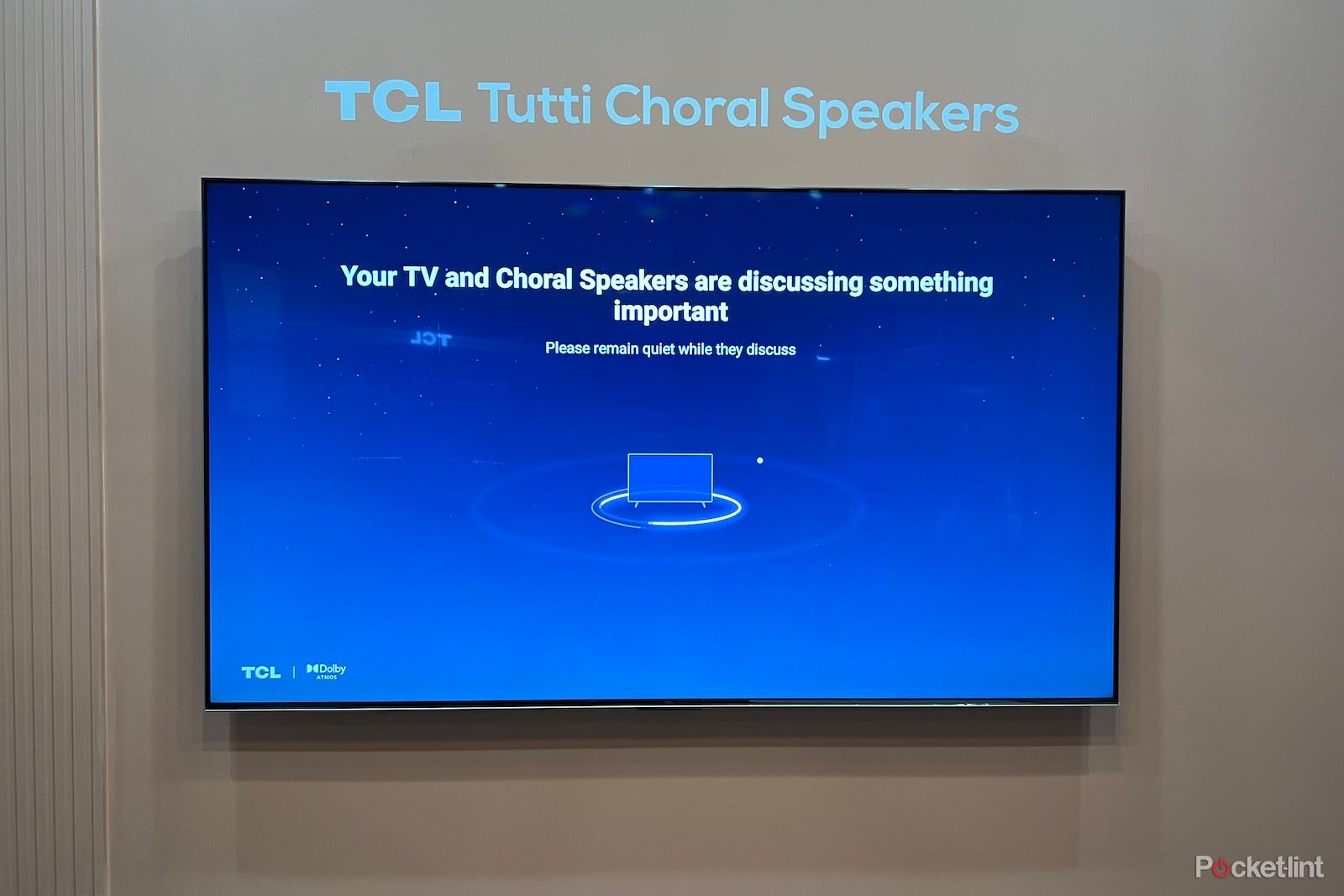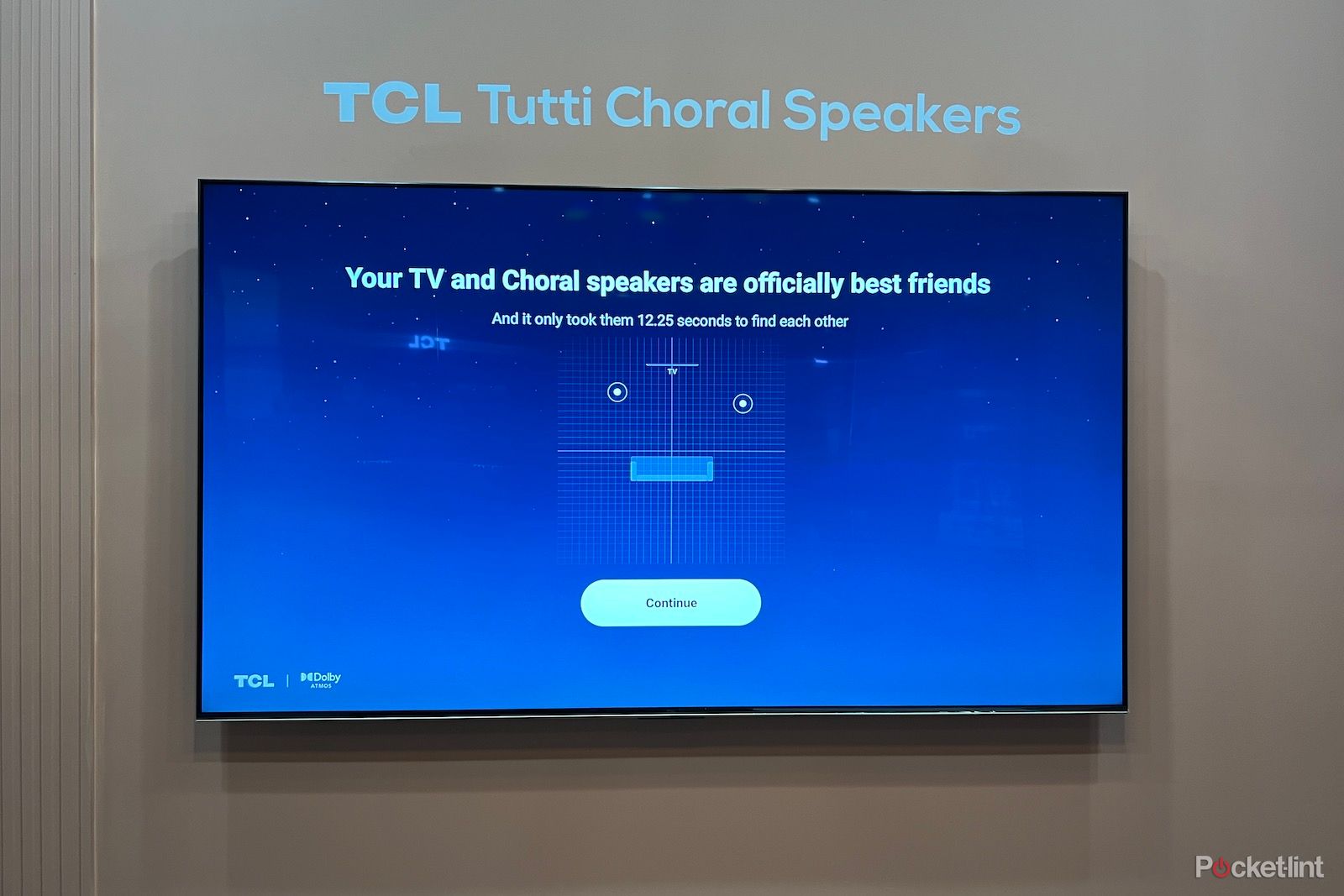As part of TCL’s announcement of its frankly mind-boggling X955 Mini LED TV, Dolby released details of Dolby Atmos FlexConnect, a new technology that would be launching with the TV in 2024. I’ve already had a first listen, and this could be one of the biggest leaps forward in home cinema sound since Atmos first made it into our living rooms a decade ago.
As its name might suggest, FlexConnect aims to deliver greater flexibility than current surround sound setups can offer, by combining a compatible TV’s sound with a number of compatible speakers.
Users have complete control over where these “satellite” speakers go, so they don’t need to sit at certain points in your room, and they don’t even have to be in pairs, or even all the same speaker. It was suggested to me in my demo that initially FlexConnect would support one or two speakers, but this could be expanded to six or even eight in time.
I suspect that the most popular setup will be the lower numbers though – after all simplicity is key here. The goal is not to create 5.1.2ch, 7.1.4ch, or any other variation of the traditional at-home Atmos set up that you might be used to – you can already get that if that’s what you want. But FlexConnect is about moving past that prescriptive thinking and creating the most expansive sound possible in the most simple way, using the (compatible) speakers you have at your disposal.
Dolby
The flexibility of the system means it can react quickly to new additions, and also adjust if a speaker falls off the network too – plus you can move your speakers around as your room and needs deem necessary, and the FlexConnect system will automatically adapt.
Currently, Dolby has said it isn’t planning to make its own FlexConnect speakers, but speaker manufacturers will be able to include the technology in their speakers. There will be minimum requirements, of course, though exactly what that looks like hasn’t been officially decided yet. The engineer who ran my demo said he expected there to be a range of speakers in different sizes to suit different rooms and budgets.
As part of those minimum requirements, it also hasn’t been decided yet if a speaker will need to have upwards firing drivers to really drive home that Atmos effect, or if it could be something that’s achieved virtually, like some soundbars currently offer. Personally, I hope Dolby shoots for the very best performance here and enforces those upwards-firing drivers in FlexConnect speakers – the Atmos at-home experience is so much better when you have them.
Testing it out
As TCL will be the first manufacturer to launch the technology in its TVs – a key part of the setup – it had the honour of showing off the first demos at its stand at IFA 2023.
Settling down to listen, the setup I heard comprised a TCL TV (not the X955, as it happens, but an unnamed current generation model that had been modified to work with FlexConnect) and two prototype TCL Tutti Choral speakers – pretty chunky speakers with a somewhat interesting design, but crucially, which feature two angled, upwards firing drivers in its five-driver setup.
When I sat down, both speakers were forwards of my viewing position, one in what might be considered a traditional front-left position and the other much further away from the TV, probably about half way between me and the screen.
To get the system to perform its best, a quick calibration, controlled via the TV and its remote, finds the location of the other speakers in the room and understands their capabilities.
Some short audio tones are played, which are registered by microphones within the TV where the calculations are done. Based on what is heard, the TV will tweak its own internal sound as well as that in the speakers to help the overall system sound balanced and at its best. This might sound complicated, but the calibration I sat through took around 12 seconds to be completed – so no great inconvenience at all.
Once the calibration was complete, a graphic appeared on the screen mapping visually where the speakers were in the room, so you can confirm its findings (though the Dolby engineer did stress that the demo calibration software may change its design before it comes to market).Now it was time to listen, and I heard several clips – the classic Dolby Atmos Amaze demo was first up, and considering there was no subwoofer in use here, the weight and authority the system was capable of with just these two speakers and the TV sound was really impressive.
Of course, it’s the expanse of sound that’s most of interest here and the setup created a truly room-filling sound, with effects that stretched out wide, far above my head and – most impressively – gave a sense of sound coming from behind me that even the best Atmos soundbars struggle to reproduce.
Dolby did concede that, though the system would do its best, where the speakers are placed in a room will still have an impact on how well those surround sound effects are reproduced – something I discovered when the front-left speaker was moved to alongside my viewing/listening position and the same demo was replayed.
The calibration system ran again, mapping the new speaker position, and then when the demo replayed, the surround sound effects were all the more convincingly reproduced, with sound of birds swooping behind my head with considerable depth.
We then switched to a football match, where the system did a good job at passing off the crowd noise to the speakers on the sides and filling the space above and around me with cheers, all while keeping things like voices of the commentators and the main of the on-pitch action focused towards the front.
Considering the speakers were at different, unparallel positions in the room, the system did a great job of masking this, so I could never pinpoint where the sounds were playing from. It really does present as a cohesive, room-filling sound – and Dolby says this should be the case even if you have mismatched speakers of different sizes.
The end of soundbars?
Just how good the system is was further brought into focus by switching off the FlexConnect tech entirely and reverting to the TV speakers. As you’d expect, all the atmosphere, the depth and body to the sound and of course, the immersion that FlexConnect offered was sucked straight back into the television.
The sound from the TV on its own wasn’t terrible by TV standards, but by being able to pass off other frequencies to the external speakers and focus on what’s most needed by the built-in speakers, the overall experience is made so much better. And that’s even at considerable volume – it never sounded pushed like you’d often expect from TV sound.
It’s true that we’ve had wireless surround speakers bundled in with soundbar packages for a while now, but the simplicity and flexibility here is what makes FlexConnect so appealing – not to mention you don’t need the expense of a soundbar pushing the price up.
With more TV manufacturers expected to be announced in the near future, and speaker manufacturers too, FlexConnect shows real potential to make Atmos in the home more accessible than ever. For someone considering a soundbar for delivering Atmos with convenience, this is arguably more so, and – at first listen at least – more effective too.
Trending Products

Cooler Master MasterBox Q300L Micro-ATX Tower with Magnetic Design Dust Filter, Transparent Acrylic Side Panel, Adjustable I/O & Fully Ventilated Airflow, Black (MCB-Q300L-KANN-S00)

ASUS TUF Gaming GT301 ZAKU II Edition ATX mid-Tower Compact case with Tempered Glass Side Panel, Honeycomb Front Panel, 120mm Aura Addressable RGB Fan, Headphone Hanger,360mm Radiator, Gundam Edition

ASUS TUF Gaming GT501 Mid-Tower Computer Case for up to EATX Motherboards with USB 3.0 Front Panel Cases GT501/GRY/WITH Handle

be quiet! Pure Base 500DX ATX Mid Tower PC case | ARGB | 3 Pre-Installed Pure Wings 2 Fans | Tempered Glass Window | Black | BGW37

ASUS ROG Strix Helios GX601 White Edition RGB Mid-Tower Computer Case for ATX/EATX Motherboards with tempered glass, aluminum frame, GPU braces, 420mm radiator support and Aura Sync













